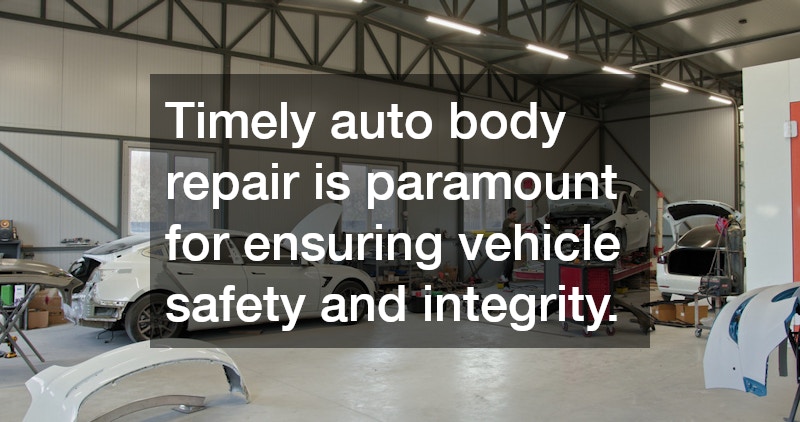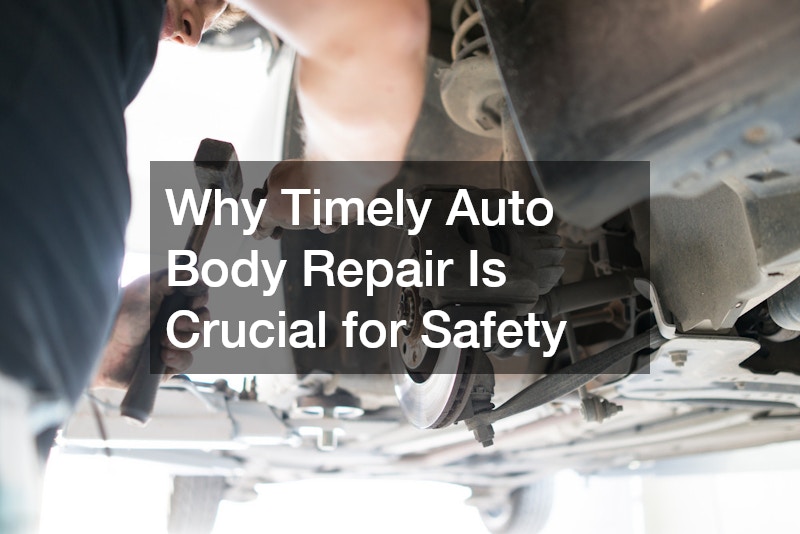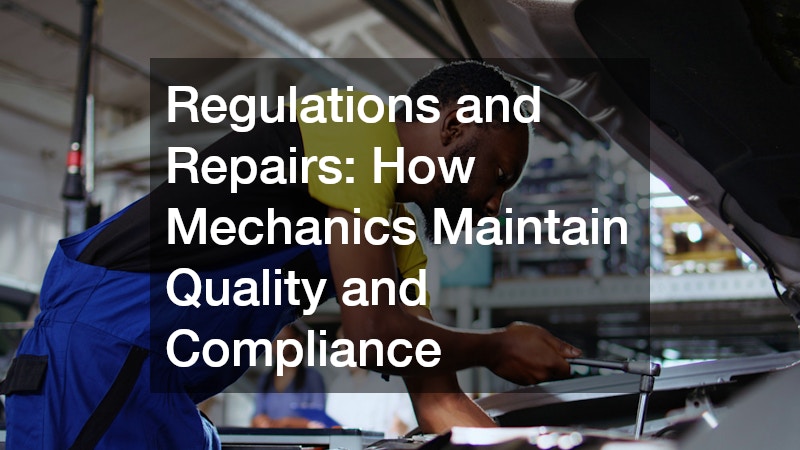Auto body repair plays a fundamental role in maintaining vehicle safety. When vehicles sustain damage, either from collisions or minor accidents, the structural and operational integrity of the car can be significantly compromised. This article will explore several facets of auto body damage and the critical importance of addressing these issues promptly to ensure safety, mitigate risks, and preserve the vehicle’s value and function.
1. How Does Auto Body Damage Affect Vehicle Safety?
A. Structural Integrity
The structural integrity of a vehicle is crucial in protecting passengers during impacts. Damage to critical areas like the frame can weaken the overall structure, making the vehicle exceptionally vulnerable in future collisions. By compromising the vehicle’s ‘crashworthiness,’ this type of damage can lead to severe safety risks if not addressed in a timely manner.
Modern vehicles are designed with engineered crumple zones that absorb impact energy. Any alterations or damages to these zones can lead to unpredictable vehicle responses during accidents. As such, ensuring timely repairs of structural damages is essential to restore the car’s original safety features.
B. Impact on Safety Features
Advanced safety features like airbags are highly dependent on the vehicle’s structural upkeep. Damage to the bodywork can impair sensors and systems responsible for deploying these safety mechanisms accurately and on-time. Hence, timely repairs ensure that all safety protocols function as intended, providing a secure environment for all occupants.
Along with airbags, crumple zones are strategically designed to minimize crash impact on passengers. A compromised body structure can skew these zones, reducing their effectiveness significantly. Addressing bodywork damages means restoring these essential technologies to their full operative capacity.
C. Visibility and Control
Visibility is a crucial component of safe driving and is often compromised by damaged auto body elements like misaligned panels and mirrors. Effective mirror positioning and clean windshields are essential for clear road views and situational awareness. Repairing or replacing damaged parts promptly restores optimal visibility and enhances driving safety.
Irregularities in the car body can also impede smooth control and handling. Elements like bent frames or out-of-alignment panels can lead to unpredictable vehicle behavior, posing threats to control precision. Therefore, timely bodywork repairs help maintain stable and predictable vehicle dynamics.
2. What Are the Risks of Delaying Auto Body Repair?
A. Compounding Damage
Delaying auto body repairs can lead to a cascade of damage that compounds over time. Exposure to weather elements can aggravate existing damage, resulting in rust, warping, and deterioration of essential components. As repair needs grow, the safety risks and associated repair costs increase exponentially.
Ensuring timely repair is an effective preventative strategy for avoiding cascading damage and safety deterioration. The interconnected nature of vehicle systems means that small issues can rapidly escalate into larger problems if ignored. Addressing damages promptly prevents these processes of decay from taking hold.
B. Legal and Insurance Implications
Operating a car with unresolved damages may have serious legal ramifications, including penalties and fines. Laws often require vehicles to be maintained in safe operating conditions, and neglecting repairs can put drivers at risk of non-compliance. The legal requirements extend to insurance companies that may deny claims if damages were not repaired in a reasonable timeframe.
Insurance companies view cars with unrepaired damages as heightened risks that can complicate claims processing. Delaying repairs could not only void policy terms but also result in increased premiums or even policy cancellation. Therefore, staying compliant is essential for maintaining legal and financial security.
C. Resale Value Impact
Neglecting prompt repairs can lead to diminished resale value due to the vehicle’s reduced aesthetic and functional appeal. Buyers often seek cars with impeccable body conditions, and visible damage can quickly deter potential purchasers. Restoring damages not only enhances the car’s appearance but also its market value.
3. How Can Timely Auto Body Repair Enhance Long-term Safety?
A. Ensuring Optimal Performance
Prompt auto body repairs facilitate optimal vehicle performance by restoring its original design parameters. Repaired components align better with the car’s intended functionalities, fostering consistent and efficient operation. In doing so, reliability in performance is maintained while minimizing unexpected failures.
B. Preserving Manufacturer Standards
Adhering to manufacturer standards during repairs is essential for preserving the vehicle’s safety ratings. Manufacturers design vehicles to specific specifications that ensure optimal function, safety, and durability. Repairs that conform to these standards maintain the car’s intended safety performance.
C. Regular Maintenance and Inspections
Regular maintenance and inspections are equally important in identifying and rectifying potential safety issues early. Systems checks during scheduled maintenance can reveal hidden damages before they escalate into serious problems. Preventive care maintains the car’s safety features and contributes to long-term vehicular safety.
Timely auto body repair is paramount for ensuring vehicle safety and integrity. By addressing structural and functional damages immediately, drivers maintain the vehicle’s design and safety standards, minimize legal risks, and preserve value. Encouraging proactive repair actions is crucial for anyone aiming to maximize safety, maintain vehicle performance, and prolong the life and value of their car.





